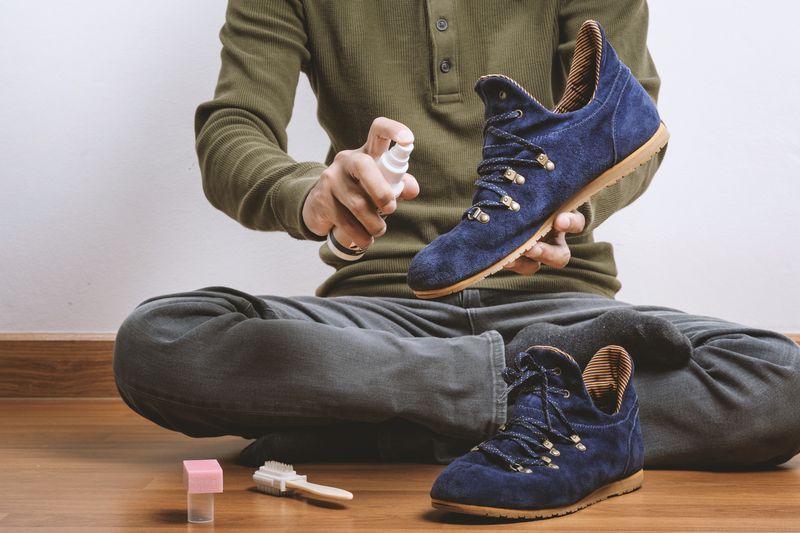Fresh and Flawless: Say Goodbye to Unsightly Limescale Stains
Posted on 25/05/2024
Limescale stains are a common nuisance in many households. These unsightly deposits of calcium carbonate can build up on sinks, faucets, showerheads, and other surfaces exposed to hard water. Not only do they make your fixtures look dirty and unappealing, but they can also reduce the efficiency of appliances and cause damage over time. Thankfully, there are effective ways to remove limescale and keep your home looking fresh and flawless. In this article, we will explore the causes of limescale stains, the best techniques for removing them, and how to prevent their return.
What Causes Limescale Stains?
Limescale is formed when hard water - which contains high levels of minerals such as calcium and magnesium - evaporates or is heated. As the water evaporates, these minerals are left behind as a white powdery residue on surfaces. This buildup can occur quickly and is especially noticeable in areas with high concentrations of hard water.

The Effects of Limescale Stains
Apart from being unsightly, limescale stains can also cause damage to your home. The buildup can clog pipes and reduce water flow in fixtures like showers and faucets. This reduced water flow not only interferes with daily tasks such as cooking and cleaning, but it also puts a strain on appliances like dishwashers and washing machines, causing them to work harder and use more energy. Over time, this can result in higher utility bills and even shorten the lifespan of your appliances.
Removing Limescale: Tried and Tested Techniques
While it may seem like limescale is impossible to remove once it has built up, there are several effective methods for getting rid of it.
1) Vinegar - A natural household cleaner, vinegar is known for its ability to dissolve hard water deposits. Simply mix equal parts vinegar and water in a spray bottle and spray directly onto the limescale stain. Let it sit for a few minutes and then scrub with a brush or sponge. Rinse thoroughly and repeat if necessary.
2) Lemon juice - The high acidity of lemon juice makes it another effective natural cleaner for limescale stains. Cut a lemon in half and rub it directly onto the stain. Let it sit for a few minutes before rinsing off with water.
3) Baking soda - Combine equal parts baking soda and water to make a paste and apply it directly onto the stain. Let it sit for 10-15 minutes before scrubbing with a brush or sponge. Rinse thoroughly to reveal a clean surface.
4) Commercial cleaners - If you prefer to use store-bought products, there are many limescale removers available in the market that contain powerful chemicals to dissolve the buildup quickly. Be sure to follow the instructions carefully and wear gloves and protective eyewear when using these cleaners.
Preventing Limescale Buildup
While regular cleaning using the above methods can prevent limescale from building up too much, there are also preventative measures that you can take to keep your home free from these unsightly stains:
1) Install a water softener - Water softeners remove mineral ions from hard water, preventing limescale formation.
2) Use filtered water - If you don't want to invest in a water softener, using filtered water can also help reduce mineral deposits in your home.
3) Wipe surfaces regularly - Wiping down surfaces after use can prevent limescale from building up by removing any excess moisture.
The Pros and Cons of Removing Limescale
Pros:
- A clean and more visually appealing home.
- Improved efficiency and longevity of appliances.
- Saves time and money on cleaning products and repairs.
Cons:
- Some methods may require frequent reapplication.
- Using commercial cleaners may involve harsh chemicals.
- Prevention methods may be costly initially.
Tips for Effective Removal of Limescale
- Always wear gloves and protective eyewear when working with cleaning products.
- For tougher stains, leave the cleaning solution on for a longer period of time before scrubbing.
- Regularly clean and maintain appliances to prevent limescale buildup.

Key Takeaways
Limescale stains are formed by hard water deposits and can be easily removed using natural or commercial cleaning solutions. Prevention methods such as water softeners and wiping surfaces regularly can help keep your home free from these unsightly stains. It is important to take care of limescale buildup not just for aesthetic purposes, but also to improve the efficiency and lifespan of appliances.
In Conclusion
Say goodbye to unsightly limescale stains with these effective techniques and preventive measures. Keeping your home fresh and flawless has never been easier. Whether you choose natural or commercial methods, regular maintenance is key to preventing buildup and protecting your appliances. So don't let limescale ruin the appearance and functionality of your home - take action today and enjoy a cleaner, more efficient household.








